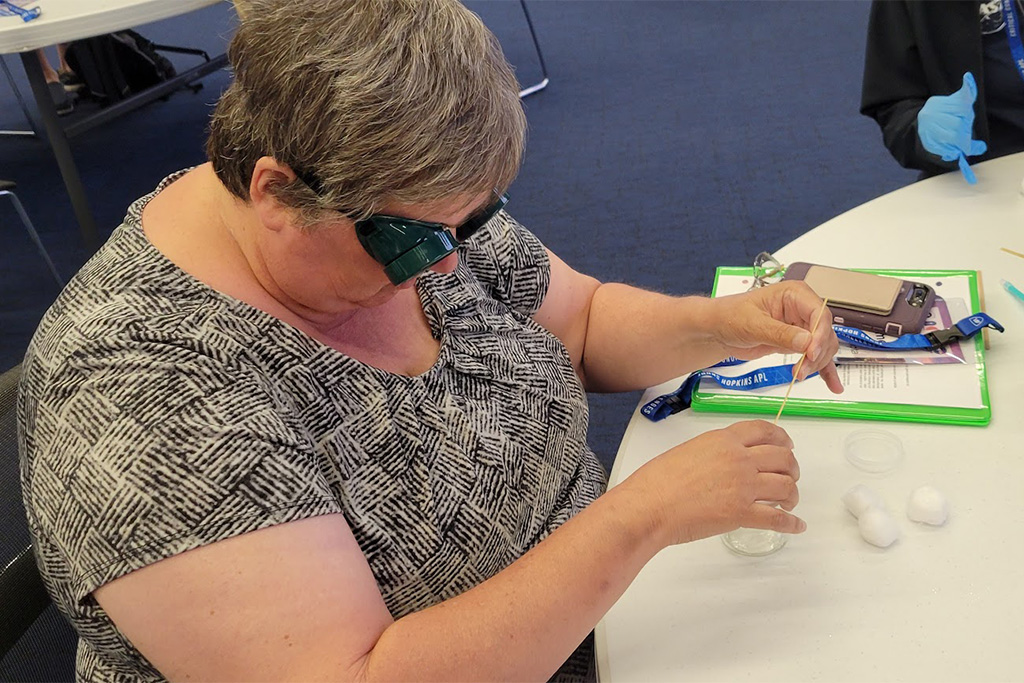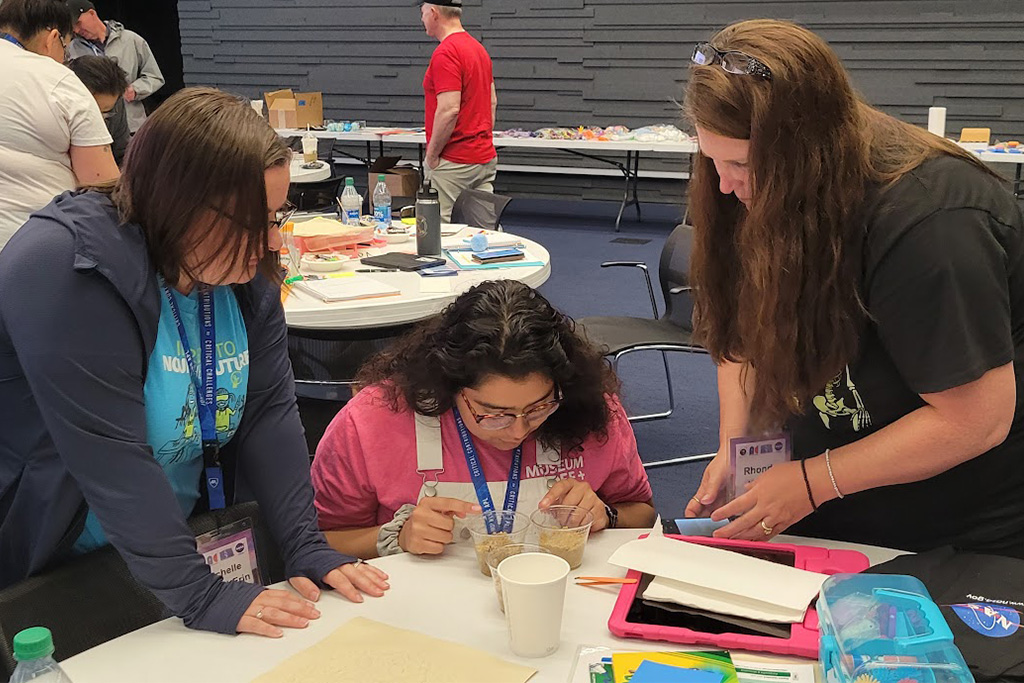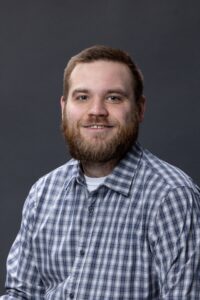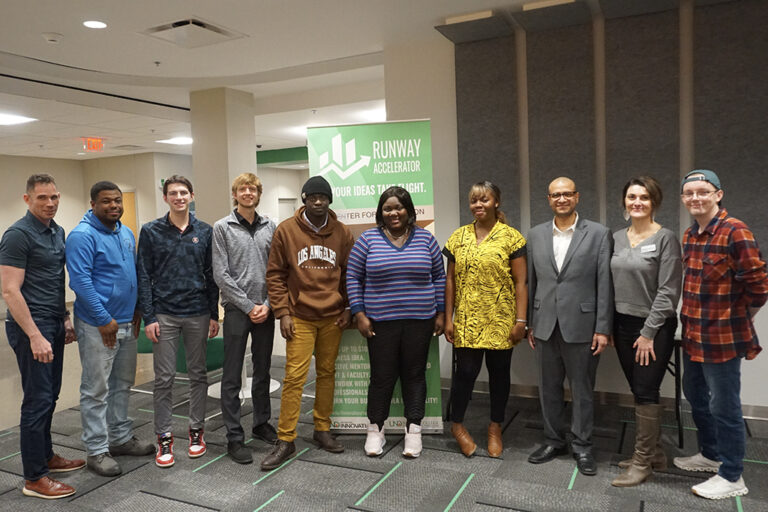Accessibility in orbit
UND-based North Dakota Space Grant Consortium brings educators to Johns Hopkins for ‘Space Science accessibility’ workshop

Last year, UND’s John D. Odegaard School for Aerospace Sciences hosted the first Innovative Differentiated Exploration Activities in Space Science (IDEAS) workshop, a partnership between the North Dakota Space Grant Consortium (NDSGC), consortia from North and South Carolina, and members of the Johns Hopkins Applied Physics Laboratory.
The intention of the IDEAS Educator Professional Development Workshop is to equip K-12 and college educators with the knowledge and skills necessary to make space science possible for all students, including underrepresented populations and people with disabilities. This goal aligns with the work that NDSGC has been doing to increase diversity and accessibility in space science.
Earlier this month, members of the NDSGC traveled to Baltimore with six North Dakota educators to attend the workshop at John Hopkins University’s Applied Physics Laboratory (APL). The comprehensive, four-day event promoted inclusivity in space science through discussions, presentations and activities.
The workshop included presentations on cutting-edge research conducted at APL such as NASA’s Double Asteroid Redirection Test (DART), which last year changed the course of the asteroid Dimorphous, as well as the Dragonfly mission, which will send APL technology to explore Titan, Saturn’s largest moon.

In addition, the workshop emphasized the need for accessibility in space science, offering immersive experiences that put educators in the shoes of students with disabilities. They wore goggles and headsets that limited their visual and auditory abilities as they participated in lessons and experiments.

NDSGC director Caitlin Milera said that events such as these were an important part of advancing the program’s mission to increase accessibility and inclusivity in space science.
“The NDSGC is committed to DEIA and focuses on programs that center these philosophies,” Milera said. “The July 2023 IDEAS event was the second iteration of this interactive workshop, which focused on accessibility and the universal design for learning.
“The overall goal of these workshops is to incorporate adaptations to STEM and NASA lesson plans and make them accessible for learners of all abilities.”
Jacquelyn Emery, a UND flight instructor and NDSGC STEM ambassador who attended the workshop, said the exposure to new technologies for accessibility was helpful to the North Dakota program’s efforts.
“We saw a lot of things that we thought we could bring back and use to help our own students,” said Emery. “For example, we saw a machine we could use to perforate paper so that students with visual impairments could experience things more easily. We’d never seen this before and the second we saw it, we ordered one. These things really help us out in our learning spaces.”

Among the six educators who accompanied NDSGC staff to the workshop was Connie Nelson, an educator starting her first year as a licensed special education teacher at Rolette Public School. Nelson, a former STEM ambassador at NDSGC, said that the workshop’s focus on diversity, equity, and inclusion made the trip a necessity for her.
“It was really exciting to be there,” Nelson said. “It was very different from any other workshop I’d participated in before. Many of the attendees weren’t traditional teachers, there were also informal educators and specialists in different areas of STEM. It was really about the collaboration of ideas, and we got exposed to a lot of information we may not be used to in our fields.”
Nelson said that these ideas inspired her to expand STEM opportunities for K-12 students in her community through the experiences and activities presented at the workshop.
“We had the chance to tour one of Johns Hopkins’ makerspaces, places with technology and tools for students to get hands-on experience with STEM,” said Nelson. “I’d never seen something like that before; and now that I have, I’d really like to bring that idea back and start something similar in my community. It’s a great way of giving students access to different kinds of technology and increase accessibility for everyone.”

Khwaja Hossain, a molecular geneticist and professor who chairs Mayville State University’s Division of Science & Mathematics, was largely unfamiliar with space science, and the workshop’s introduction to critical concepts was helpful.
“I wanted to look at options for increasing diversity and accessibility in our classrooms,” Hossain said. “And I learned a lot of ways that we can do just that. It was good, and I think it would be really valuable for student teachers and other members of our department.”
In addition, Hossain said that the opportunity to attend an event with so many like-minded educators was a plus.
“One of the most important parts for me was getting the chance to connect with teachers in rural areas of North Dakota,” he said. “I may have never gotten that opportunity had I not met them through this workshop.”

For Milera, this sentiment is a feather in the cap of the program. One of the missions of workshops like IDEAS is to strengthen the networks of STEM educators in the state and across the country.
“It is both exciting and rewarding to be a part of connecting educators, scientists, and engineers from across the country, who are then able to share their knowledge and experience with each other, and together, brainstorm ideas for making STEM and space sciences accessible to all learners,” she said.
After the success of this year’s workshop, the NDSGC is already looking ahead to next year’s IDEAS event, which will be held in Houston in the summer.



